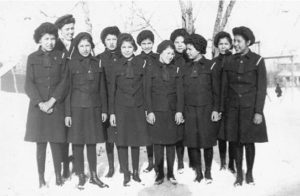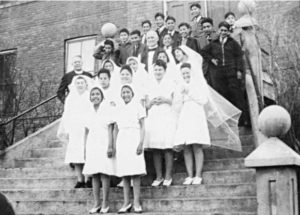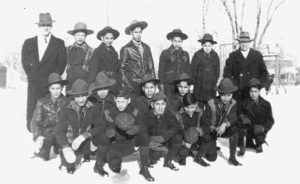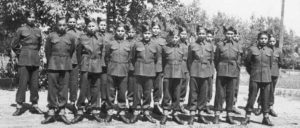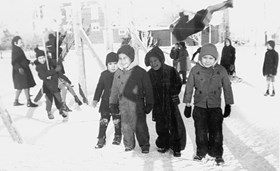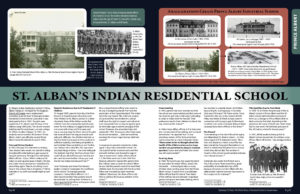 St. Alban’s Indian Residential School
St. Alban’s Indian Residential School
St. Alban’s Indian Residential School in Prince Albert (Treaty 6), managed by the Anglican Church of Canada, was a replacement school for students from St. Barnabas Indian Residential School (Onion Lake) after it was destroyed by fire in 1943. The girls were quartered at St. Alban’s and the boys at the military camp (All Saints). The church-owned building had formerly been a private college (St. Alban’s Ladies College). In 1951, the students were moved to All Saints in Prince Albert, which was officially named Prince Albert Indian Residential School in 1953.
Survivor Stories
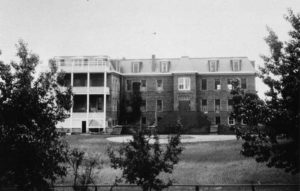 Leona Bird attended Saint Alban’s school in Prince Albert from the age of six.
Leona Bird attended Saint Alban’s school in Prince Albert from the age of six.
And then we seen this army covered wagon truck, army truck outside the place. And as we were walking towards it, kids were herded into there like cattle, into the army truck. Then in the far distance I seen my mother with my little sister. I went running to her, and she says, “Leona,” she was crying, and I was so scared. I didn’t know what was going on, I didn’t know what was happening. My sister didn’t cry because she didn’t understand what we, we were, what’s gonna happen to us. Anyway, it was time for me and her to go, and she, when we got in that truck, she just held me, pinched me, and held me on my skirt. “Momma, Momma, Momma.” And then my mother couldn’t do nothing, she just stood there, weeping. And then I took my little sister, and tried to make her calm down, I just told, “We’re going bye-bye, we’re going somewhere for a little while.” Well, nobody told us how long we were gonna be gone. It’s just, like, we were gonna go into this big truck, and that’s how, that’s how it started.60 (Survivors Speak, p. 25)
She received a settlement for being sexually abused in residential schools but she says it did little to alleviate the long lasting effects on her and her family. She explained,
I’m still the same. There’s just barely, hardly any time that I can say that I was truly, truly happy. My wedding day was just like another day, no fun … I can’t take back what I’ve done in my lifetime. I was forever being charged with assault, sent to jail 18 months at a time … Yeah, I’m suffering from depression.85…[residential school] “took away my happiness. It took everything, everything that I had known for the first four years of my life at home, love, understanding, and being taken care of, and never being hit, or anything. But ever since, ever since I learned how I was treated in school that, that really build up that anger, and I can’t seem to get rid of it … To this very day, I haven’t changed. My sister prays for and I pray. That’s all I can say. This is how the Indian residential school taught me how to live my life in a cruel, wicked way. I can’t take back what I’ve done in my lifetime. I was forever being charged with assault, sent to jail 18 months at a time.126 (Vol. 5, p. 316)
Leona Bird grew up fearful and angry at school.
They are girls from Manitoba, girls from different places. They weren’t too friendly with me. I learned to fight. The hatred that built up in me, I learned to fight my way out of everything that I can, whether a beating or not, I didn’t care, as long as I fought back. That’s how hatred was building up so big there inside my whole body. I couldn’t do nothing.614 (Survivors Speak, p. 167)
_____________________________
Mary Ann Constant speaks about her time at St. Alban’s and Prince Albert Indian Residential School
